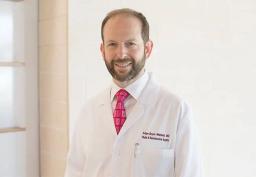Revision Rhinoplasty in Austin, TX by Dr. Weinfeld
Understanding Revision Rhinoplasty
Revision rhinoplasty, also known as secondary rhinoplasty, is performed when a previous rhinoplasty did not achieve desired outcomes or caused additional complications. Nationwide, about 15% of rhinoplasty cases result in the need for revision, but Dr. Weinfeld's revision rate for his primary rhinoplasties is significantly lower, in the low single digits.
This procedure is more complex than primary rhinoplasty, addressing both the original nasal issues and any flaws introduced by the first surgery. Patients often seek revision rhinoplasty after experiencing dissatisfaction or new nasal imperfections following their initial surgery, which can be emotionally and financially taxing.
Dr. Weinfeld, based in Austin, Texas, is frequently sought out for his expertise in revision rhinoplasty. He regularly treats patients referred by other surgeons and from various locations across Texas and beyond.
How Revision Rhinoplasty is Performed
Revision rhinoplasty requires detailed attention to scarring and changes made in the initial procedure. Dr. Weinfeld typically opts for an open rhinoplasty approach for moderate to major revisions, allowing better visualization and access to the nasal structures. For minor revisions, a closed (intranasal) approach may be considered.
During the procedure, the soft tissues are carefully separated from scarred areas, and the underlying cartilage and bone are assessed. This helps Dr. Weinfeld reconstruct the nasal structure to achieve the patient’s desired outcome. Cartilage grafts are commonly used to rebuild or support damaged areas. The septum is the preferred source for these grafts, though in some cases, cartilage from the ear or rib may be necessary.
Key Points
- Dr. Weinfeld utilizes the patient’s own tissues, avoiding cadaveric cartilage or permanent foreign materials like silicone or GORE-TEX.
- He has extensive experience in revision rhinoplasty, with specialized training and numerous contributions to the field.
- Dr. Weinfeld is a member of the Rhinoplasty Society and has lectured at top medical institutions and conferences.
Patient Experience
Revision rhinoplasty is performed under general anesthesia, typically as an outpatient procedure. After surgery, splints are placed inside the nostrils and on the nose bridge, and are usually removed within 6-8 days. Bruising and swelling vary, but most patients recover within about one week.
If cartilage is taken from the ear or rib, mild discomfort and a small, well-concealed scar may result. For patients needing rib cartilage, the incision is discreet, often hidden by natural body folds or clothing.

